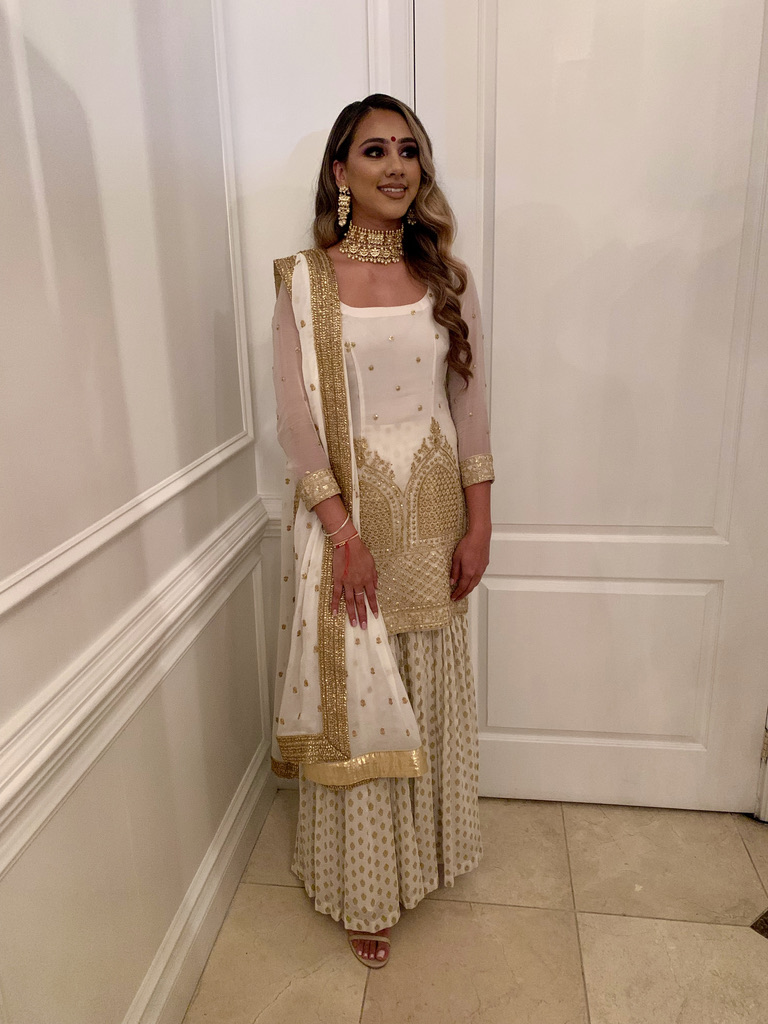A perfectly tailored Punjabi suit enhances your overall appearance by providing a comfortable and elegant fit. To achieve this, accurate measurements are crucial. Whether you’re visiting a tailor or stitching it yourself, knowing how to take Punjabi suit measurements ensures that your outfit is perfectly customized to your body shape. This guide explains the process of taking precise measurements for a Punjabi suit, step-by-step.
Understanding the Structure of a Punjabi Suit
A traditional Punjabi suit consists of three main pieces:
- Kameez (top)
- Salwar (bottom)
- Dupatta (scarf)
Taking suit measurements for each piece requires careful attention to detail, as each plays a role in the overall fit and aesthetic of the outfit.
1. Tools You’ll Need
Before you start, gather these essential tools:
- Measuring tape (preferably flexible and soft)
- A notebook or measurement chart to record the values
- A pen or pencil
- A fitted top and leggings to wear while measuring (for accuracy)
2. Measurements for the Kameez (Top)
The kameez is the centerpiece of a Punjabi suit, so precise measurements are vital.
A. Shoulder Width
- How to Measure: Place the measuring tape across your back, from the edge of one shoulder to the other.
- Tip: Ensure the tape is straight and not slanted for accuracy.
B. Bust
- How to Measure: Wrap the tape around the fullest part of your chest. Ensure the tape is snug but not tight and parallel to the ground.
- Note: Leave some allowance for comfort if you prefer a looser fit.
C. Waist
- How to Measure: Measure around the narrowest part of your torso, typically just above the belly button.
D. Hips
- How to Measure: Wrap the measuring tape around the widest part of your hips.
E. Armhole
- How to Measure: Wrap the tape around the shoulder joint (underarm area) to form a loop.
F. Sleeve Length
- How to Measure: Measure from the edge of your shoulder to your desired sleeve length (short, elbow, or full-length).
G. Kameez Length
- How to Measure: Measure from the highest point of your shoulder (near the neck) down to your desired length (mid-thigh, knee, or calf).
3. Measurements for the Salwar (Bottom)
The salwar is a loose, comfortable pant paired with the kameez. Accurate measurements ensure it fits well around the waist, hips, and thighs.
A. Waist
- How to Measure: Wrap the measuring tape around your natural waistline or where you intend to wear the salwar.
B. Hips
- How to Measure: Measure around the fullest part of your hips.
C. Thigh Circumference
- How to Measure: Wrap the tape around the fullest part of one thigh.
D. Length of the Salwar
- How to Measure: Measure from the waist down to your desired length (ankle or floor length).
E. Bottom Opening
- How to Measure: Measure around the ankle or desired opening width of the salwar.
4. Additional Measurements
A. Neck Depth and Width
- Front Neck Depth: Measure from the base of your neck (center front) down to your desired neckline depth.
- Back Neck Depth: Measure from the back of your neck to the desired depth.
- Neck Width: Measure from one end of the neck opening to the other.
B. Sleeve Circumference
- How to Measure: Wrap the tape around the widest part of your arm where the sleeve will fit.
5. Tips for Accurate Suit Measurements
- Wear the Right Clothes: Always measure over a fitted top and leggings to avoid adding extra inches.
- Keep the Tape Level: Ensure the tape is parallel to the ground for bust, waist, and hip measurements.
- Double-Check Measurements: Take each measurement twice to ensure accuracy.
- Allow for Ease: Add 1-2 inches to body measurements for comfort and movement, depending on how tight or loose you prefer the fit.
6. Common Mistakes to Avoid
- Measuring Too Tightly: This can result in an overly snug fit.
- Ignoring Allowances: Always account for fabric shrinkage or style preferences like pleats.
- Using Incorrect Posture: Stand upright with a neutral posture for the most accurate measurements.
Frequently Asked Questions (FAQs)
1. Can I take measurements on my own?
Yes, but it’s better to have someone assist you for better accuracy, especially for shoulder width and back measurements.
2. How much allowance should I add for comfort?
Typically, add 1-2 inches to your measurements, especially for the bust, waist, and hips, to ensure ease of movement.
3. What should I wear while taking measurements?
Wear a fitted top and leggings or light clothing that does not add bulk to your measurements.
For more such Articles, visit https://ethnicreation.in/how-to-wear-a-heavy-dupatta-with-a-salwar-suit/


